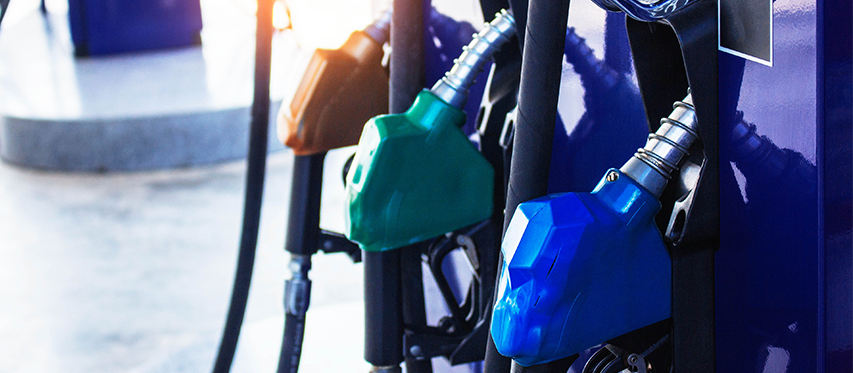
“I’ll wait and see what happens” is no longer the norm!
Recently, all major credit card issuers announced a 6-month delay in the Outdoor EMV “liability shift,” moving the deadline from October 1, 2020, to mid-April 2021. When the liability shift occurs, convenience store (C-store) operators who fail to upgrade their forecourt fuel dispensers to accept EMV chip transactions will be held liable for fraudulent and counterfeit credit card transactions. What was once the responsibility of the consumer’s issuing bank will now become the responsibility of the merchant’s acquiring bank.
As I attend numerous retail petroleum industry events, work with major oil brands, engage with convenience store operators, and collaborate with other suppliers, I have observed a dramatic shift in the industry’s attitude. Where it was once quite common for many to say, “I will wait and see what happens,” there is now a swell in momentum to complete the upgrade.
There are many reasons to explain this change:
1) Escalating urgency to meet the deadline — While most of the required equipment appears to be available, delivery delays are common. More critically, the technicians needed to install the equipment are increasingly overwhelmed. Depending on the market, a typical 4- to 8-week delay has grown to 12 weeks or more.
2) Proactive steps from the card payment ecosystem to protect themselves — While some C-store operators may be comfortable taking a “wait and see” approach, the rest of the card payment ecosystem is not. Entities such as fuel marketers, payment processors, and others also have a financial interest in these shifting chargeback liabilities and their potential impact on their businesses. Consequently, they are developing new contractual terms, even fees, to protect themselves.
3) Evolving public perception — In an era where data breaches have become commonplace, consumers want safer credit card transactions. Major oil brands are not only moving to complete the upgrade, they are running TV commercials to highlight how their compliance with the Outdoor EMV upgrade is evidence of their concern for customer safety.
4) Numerous highly public data breaches – In the C-store industry, these breaches continue to highlight the need to improve their prevailing security posture.
To find even more reasons, watch our video below on the Outdoor EMV liability shift approaching.
When it comes to the transfer of liability, it is easy to focus on how chargeback responsibility shifts from the consumer’s financial institution to the merchant’s, because the penalties represent an immediate and quantifiable business impact. Those chargeback liabilities may range anywhere from a few hundred dollars per month per store to tens of thousands of dollars per month per store.
However, this change is not happening in a vacuum. All other forms of brick-and-mortar retail tackled this transition back in 2015. When I speak with C-store operators, a common reason for resisting the shift to Outdoor EMV is summed up as, “I don’t want to be the first. I don’t want my station to be the one where the customer learns how frustrating it is to buy gas with a credit card. I don't want my customers to forget their cards and drive off. I don’t want my customer going somewhere else because they want the old way.”
Yet in 2020, consumers are more than accustomed to EMV transactions. Retailers and restaurants everywhere have trained the customer to leave their credit card in the reader. Some may even understand that leaving their card in the reader improves transaction security. Throughout the world, EMV chip transactions have repeatedly proven to reduce the likelihood of credit card fraud. That means EMV reduces the likelihood that a consumer has to go through the hassle of calling their card provider, registering a fraudulent credit card transaction, canceling/transferring all of their auto-pay subscriptions, and getting a new card. It’s a horrible experience. Like many, I’ve been through it. While I fault my credit card company for making the situation worse through repeated mistakes, I was also quite irritated by the local merchant with whom the problem started.
For those who may still be thinking about whether to invest in Outdoor EMV, I encourage you to buy gas at a competitor’s location. When it comes to chargeback liability, the largest multi-unit operators who push the highest volume have the most to lose. Larger competitors have not only made the upgrades, but they are also advertising it to customers and explaining that it is now safer to buy gas from their stores. Outdoor EMV has become a tangible symbol of how C-store operators care for their customers; and its enhanced network security represents rapidly emerging customer expectations.
But remember, time is of the essence. Many operators, particularly those in the high fraud regions of the country (California, Texas, Florida, and the Northeast) are reporting implementation delays of 3 months or more. There are simply not enough qualified dispenser technicians in these regions to meet demand. These delays will likely grow longer as the new deadlines approach. The only thing worse than paying more than $80,000 to upgrade a forecourt to accept EMV transactions, is to have to pay additional monthly chargeback fees. If C-store operators are not careful, the total cost of avoiding an upgrade may quickly exceed the entire cost of the upgrade itself.